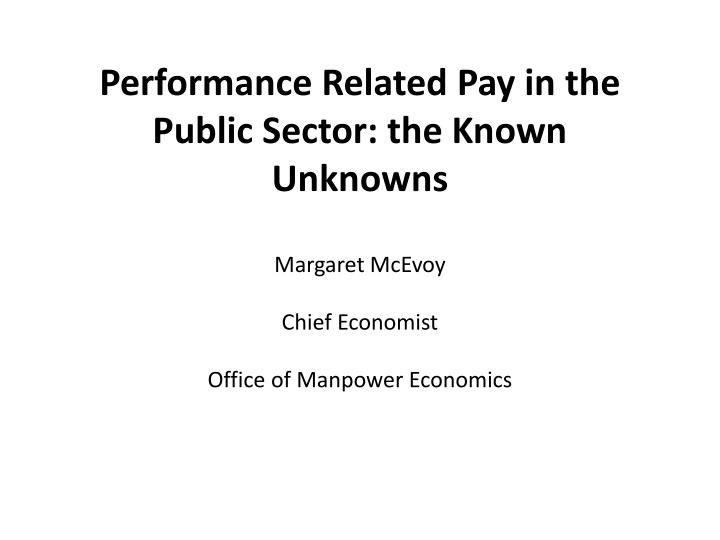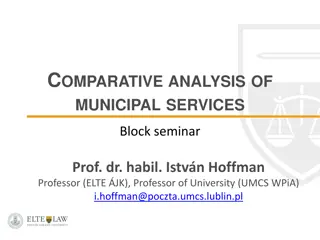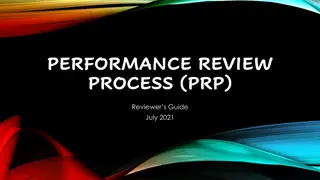
Performance-Related Pay in Public Sector: Exploring Impacts and Evidence
Delve into the realm of Performance-Related Pay (PRP) within the public sector through a comprehensive analysis of its implications on productivity, motivation, and workforce dynamics. Uncover the knowns and unknowns surrounding PRP, including its potential to enhance staff performance, recruitment, and retention while also addressing challenges in implementation and worker motivation. Discover key studies and reviews shedding light on the effectiveness and value of PRP schemes in the public sector.
Download Presentation

Please find below an Image/Link to download the presentation.
The content on the website is provided AS IS for your information and personal use only. It may not be sold, licensed, or shared on other websites without obtaining consent from the author. If you encounter any issues during the download, it is possible that the publisher has removed the file from their server.
You are allowed to download the files provided on this website for personal or commercial use, subject to the condition that they are used lawfully. All files are the property of their respective owners.
The content on the website is provided AS IS for your information and personal use only. It may not be sold, licensed, or shared on other websites without obtaining consent from the author.
E N D
Presentation Transcript
Performance Related Pay in the Public Sector: the Known Unknowns Margaret McEvoy Chief Economist Office of Manpower Economics
Why the interest in PRP OME supports 7 pay review bodies which make recommendations on pay for 2.5 million workers/ 100bn paybill; Covers health, education, senior public servants (incl judges, health) police, armed forces, prisons Workforce = variety of professions/more educated/ more female/ intrinsic motivation; More recent focus on PRP. Schools now have greater freedoms in setting pay/allowances and linking pay progression to performance.
Teachers pay: recent reforms Changes for classroom teachers from Sept 13 extension of performance-related pay progression to all; abolition of mandatory pay points within pay ranges; new leading practitioner pay range enabling the very best teachers to stay in classrooms; greater discretion for schools in use of allowances.
Teachers pay: recent reforms Changes to leadership pay from Sept 14 new national framework for local decisions taking account of school circs/challenge of role; removal of complex rules on starting pay and differentials within the leadership group; abolition of fixed pay points within pay bands.
Key questions and evidence What is the evidence on the impact, effectiveness and value for money of PRP in public sector? What are characteristics of a well designed PRP scheme? Literature review of PRP in the public sector: two studies commissioned by OME; Performance related pay in the public sector: a review of the issues and evidence by Burgess, Propper, and Prentice (2007) A review of the evidence on the impact, effectiveness and value for money of PRP by The Work Foundation (expect to publish Autumn 2014).
Evidence on PRP Is mixed but suggests; It can increase productivity through Improved motivation; Recruitment of more effective staff; Retention of high achievers/improved performance/shedding of low achievers. Though disadvantages Difficult to implement/multiple principles/misallocation of effort; Intrinsic motivation of workers could be reduced; Risk of gaming/strategic behaviour.
Drawbacks of research base Paucity of evidence; Studies mainly in health, education and the civil service; Mainly from the US; Few experimental studies; Little evidence on cost effectiveness or vfm.
Evidence Gaps: research needed on PRP to improve knowledge of what works for UK public sector /professions/groups; measure longterm impacts; establish differential impacts eg on high/low paid, male/female workers, high/low awards; establish the full costs, benefits and vfm.






















